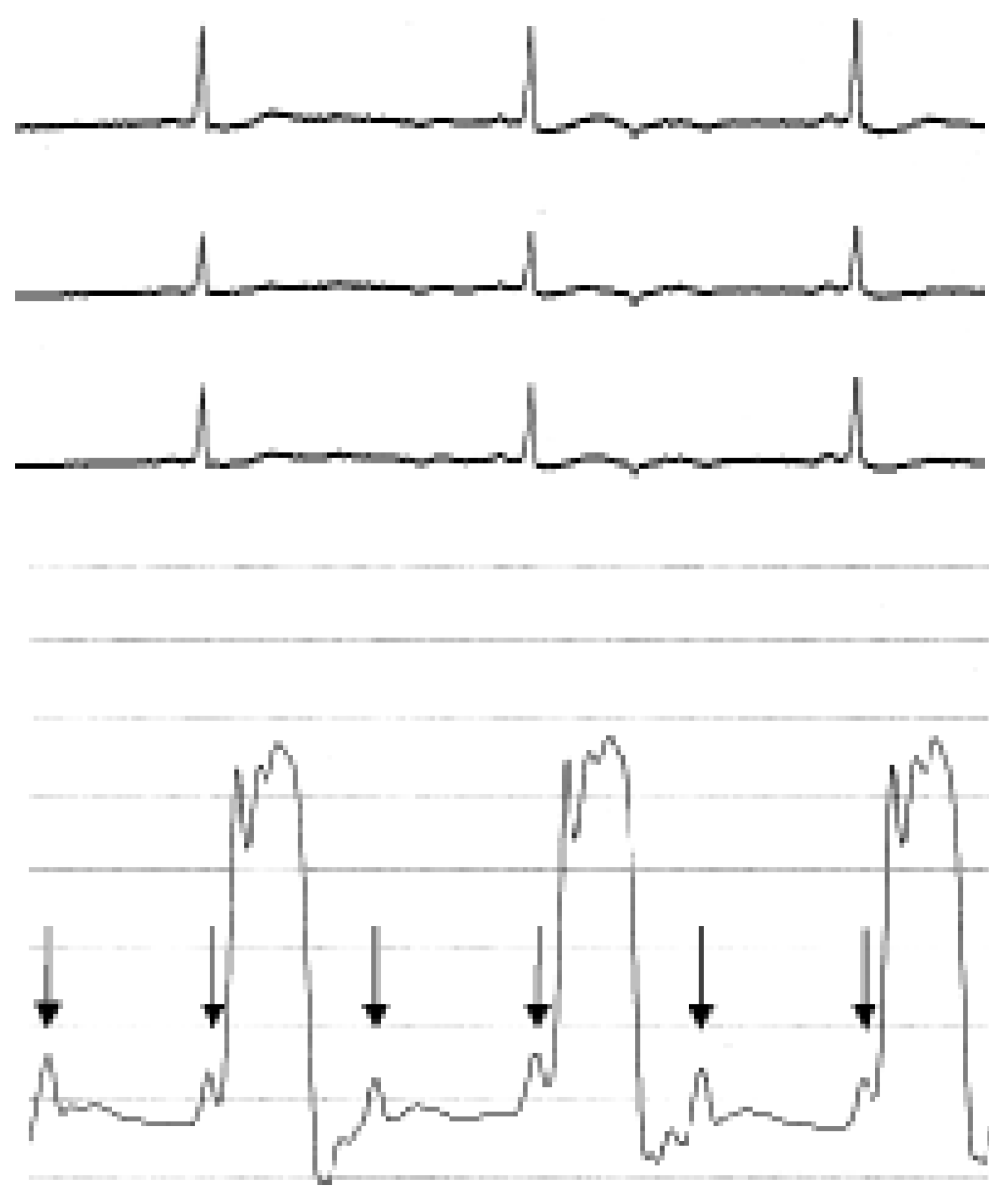Differentiation Between Sinus Bradycardia and Second-Degree Atrioventricular Block by Left Ventricular Pressure Tracing
Case Report

© 2005 by the author. Attribution - Non-Commercial - NoDerivatives 4.0.
Share and Cite
Gnehm, P.; Pfisterer, M.E.; Bonetti, P.O. Differentiation Between Sinus Bradycardia and Second-Degree Atrioventricular Block by Left Ventricular Pressure Tracing. Cardiovasc. Med. 2005, 8, 453. https://doi.org/10.4414/cvm.2005.01137
Gnehm P, Pfisterer ME, Bonetti PO. Differentiation Between Sinus Bradycardia and Second-Degree Atrioventricular Block by Left Ventricular Pressure Tracing. Cardiovascular Medicine. 2005; 8(12):453. https://doi.org/10.4414/cvm.2005.01137
Chicago/Turabian StyleGnehm, Peter, Matthias E. Pfisterer, and Piero O. Bonetti. 2005. "Differentiation Between Sinus Bradycardia and Second-Degree Atrioventricular Block by Left Ventricular Pressure Tracing" Cardiovascular Medicine 8, no. 12: 453. https://doi.org/10.4414/cvm.2005.01137
APA StyleGnehm, P., Pfisterer, M. E., & Bonetti, P. O. (2005). Differentiation Between Sinus Bradycardia and Second-Degree Atrioventricular Block by Left Ventricular Pressure Tracing. Cardiovascular Medicine, 8(12), 453. https://doi.org/10.4414/cvm.2005.01137



